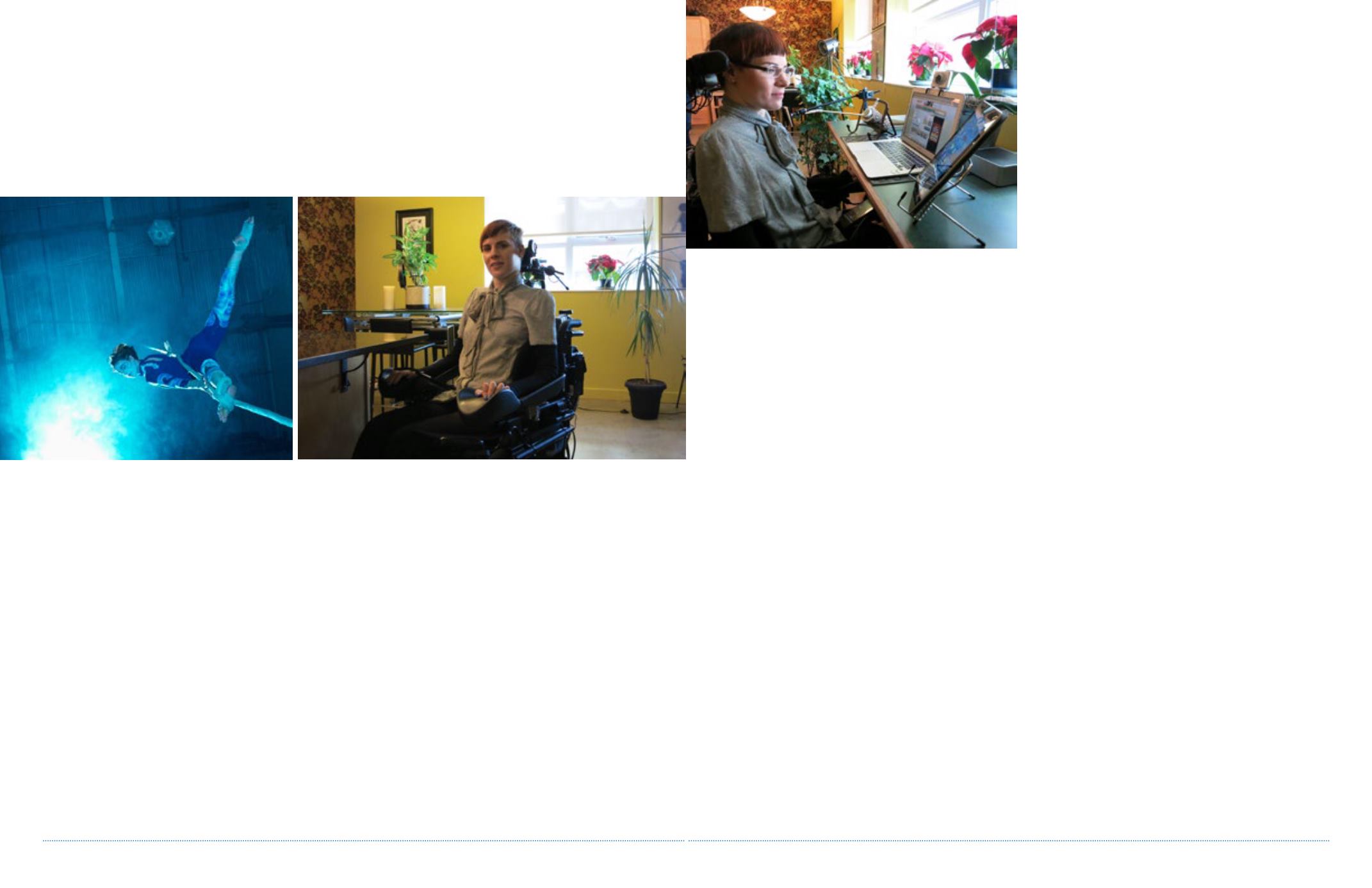
32
A Year in Review 2012 – 2013:
Programs
Courage Lives Here
33
Krembil Neuroscience Centre
Courage is...
accepting
change
Former trapeze aerialist
lives new life after accident
Carolyn Pioro recently completed a successful internship
at a fashion magazine. Working as an online editor for
Chatelaine
is a proud accomplishment for the 34-year-
old, who has long held a passion for writing.
It’s a stark contrast, however, to a life once spent swinging
and dangling from ropes, swings and various circus
contraptions.
Pioro is a former trapeze aerialist whose life drastically
changed. A devastating spinal cord accident left the
Toronto resident a quadriplegic.
Her story is one of incredible strength— and a remarkable
journey to cope with adversity.
Before suffering a paralyzing mid-air collision, Carolyn Pioro, left was a trapeze aerialist. At right, post-accident, Pioro has managed to live an
independent life.
(Photo at left: Carolyn Pioro; photo at right: UHN)
Mid-air collision
In September 2005, Pioro was working as both a waitress
and circus performer. She specialized in aerial rope and
bungee trapeze, while also training on the flying trapeze
for an upcoming tour with the company Cirque Sublime.
It was during a practice session with her troupe that
Pioro’s life changed forever. While executing a trick on
the trapeze called a layout, she collided mid-air with her
catcher. Pioro was thrown through the air and landed on
her neck on the safety netting below.
“When I landed, I knew immediately that something was
wrong,” she said. “There was an audible snap in my neck
and I saw a flash of bright light. I remember telling my
colleagues that it was all over, that my life was over.”
Immediacy counts
Rushed to Toronto Western Hospital, Dr. Michael Fehlings
was the neurosurgeon on-call who performed emergency
surgery on Pioro’s spinal cord.
At the time, Dr. Fehlings was leading the Acute Spinal
Cord Injury Study (STASCIS). The clinical trial aimed to
show that people who suffer a spinal cord injury have
improved outcomes if they receive surgery within the
first 24 hours of their accident.
Pioro became part of this study — and is living proof
that more immediate surgery in cases like hers makes
a difference.
Although her spinal cord was completely severed, leaving
her paralyzed from the shoulders down, the decompres-
sion surgery prevented her from being dependent on
a ventilator for the rest of her life.
It also allowed her to retain some mobility in her shoulders
— giving her the ability to operate a wheelchair through
shoulder and head movements.
After two months in intensive care at Toronto Western,
she spent eight months at Toronto Rehabilitation
Institute’s Lyndhurst Centre.
Independent life
At Lyndhurst, nurses specializing in spinal cord injury
taught Pioro how to live with paralysis, giving her
confidence and knowledge to live an independent life.
It was a key component to her recovery since Pioro
refused to believe she couldn’t live on her own.
“The nurses at Lyndhurst really showed me that autono-
my is still possible,” she said.
This perseverance, combined with computer technology
and Ontario’s Direct Funding program, are what has
enabled Pioro to reshape her life and regain her autonomy.
(
Continued on page 34...)
Carolyn Pioro works at her computer using voice recognition
software and an optical head mouse.
(Photo: UHN)
“The nurses at Lyndhurst really showed me
that autonomy is still possible.”
–Carolyn Pioro


